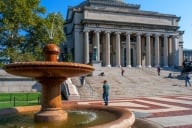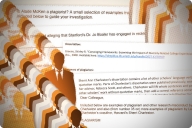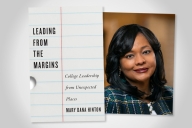You have /5 articles left.
Sign up for a free account or log in.
Professors usually don’t make the best teachers, goes a common critique of higher education, especially those at research universities. But a new book challenges that argument, painting the professoriate as an overwhelmingly self-reflective group striving to achieve better learning outcomes over the course of their academic careers.
Inside the Undergraduate Teaching Experience, out this month from SUNY Press, is based on a qualitative study of 55 faculty members across different disciplines at the University of Washington, starting in 2009. Extensive interviews with the faculty members, a mix of those recommended by department chairs for exceptional teaching, those randomly selected, and those selected to demographically round out the group, reveal that virtually all faculty in all groups constantly think about how to be more effective teachers. Even when they didn’t know they were doing it, professors described changing course assignments, content and student engagement strategies to improve learning outcomes. Much of that work was done experimentally, with professors using student behavior and performance as gauges of success.
“[Sometimes] I think my career is like 'Groundhog Day,' the movie – I have to keep doing this over and over again until I get it right,” said one math professor. Another described her teaching as an “invasive species,” making adaptations to changing environments in order to survive. The professors in the book are not named.
Catharine Beyer, a research scientist and lecturer in the Interdisciplinary Writing Program at the University of Washington, led the study, in part to see if largely positive student responses about their professors' concerns about teaching in a separate, longitudinal study on undergraduate learning were in line with professors’ classroom experiences. While she expected the research to challenge some stereotypes about the professoriate, Beyer said she was stunned by the extent of professors’ desires to be good teachers and their ongoing self-assessment – even when it was hard or painful.
“I was surprised by that, and frankly, really moved by it,” said Beyer, “especially because that story kept repeating. No one spent time on one class, and said, ‘O.K., I’m done,’ and went on to [prepare for] the next class.”
Indeed, even highly accomplished professors reported feeling anxious teaching classes they’d taught numerous times. “I have a terrible problem of over-preparing – over-preparing in such a way that I tend to paralyze myself,” said one renowned legal scholar who reported consciously moving away from the lecture format. “I don’t know where the discussion is going to go, so I feel that I have to be prepared to answer all possible turns of discussion and re-familiarize myself with the literature.”
Co-author Gerald M. Gillmore, the now-retired, former head of the University of Washington’s Office of Educational Assessment, said he wasn’t surprised by the findings – but only because he’d had ample opportunity spanning his career to hear faculty discuss teaching. Such conversations disproved the “get back to the lab as quickly as possible” public image of professors, he said.
Beyer said she hoped the book would be read widely among professors, administrators, students and parents, to help bridge the gap between perceptions of professors at large, public research universities such as hers and the new reality. (Although the study was conducted at the University of Washington, she said she believed it was applicable to faculty at similar institutions as well as smaller universities and colleges.)
Teaching still has a long way to go, she said, but the public should “recognize and honor” the leaps and bounds professors have made during the last several decades, largely of their own volition, to move to a more student-centered approach to teaching.
Edward Taylor, the book’s third author and dean and vice provost of undergraduate academic affairs and professor of educational leadership and policy studies at the University of Washington, said that although it may be hard for people to abandon the iconic image of a professor standing on a podium lecturing to thousands of students, the data reflect the changing nature of higher education. Learning environments and instructional styles are diversifying, and there’s been a surge in research on pedagogy in higher education.
Institutions can encourage this trend by encouraging more pedagogical training in graduate programs, and increasing the value of teaching in tenure and promotion practices and in campus culture overall, Taylor said.
“What we need to do is move away from teaching and learning as a private practice,” he said. “It’s public work that should be learned with colleagues.”
The book already has been endorsed by David Pace, professor emeritus of history at Indiana University at Bloomington and coeditor of Decoding the Disciplines: Helping Students Learn Disciplinary Ways of Thinking.
“The book captures the voices of faculty engaged in the classroom in a fashion that I have not seen before,” he said in a publisher’s blurb. “In the midst of a cacophony of works denouncing the professoriate as insensitive to problems of student learning (generally with little evidence), this study offers a glimpse into the real attitudes of a large group of instructors.”
Ken Bain, who has written extensively about pedagogy in higher education and serves as the provost and vice president of academic affairs at the University of the District of Columbia, said he had not read the book, but that his own research supported its findings. “Indeed, for the last 30 years, there has been a quiet revolution taking place in higher education, in which increasing numbers of faculty recognize that there is valuable research on university learning that can inform their practices. While some faculty remain outside that revolution, sticking to old approaches, a growing majority are deeply committed to a research-based approach to teaching and learning.”









